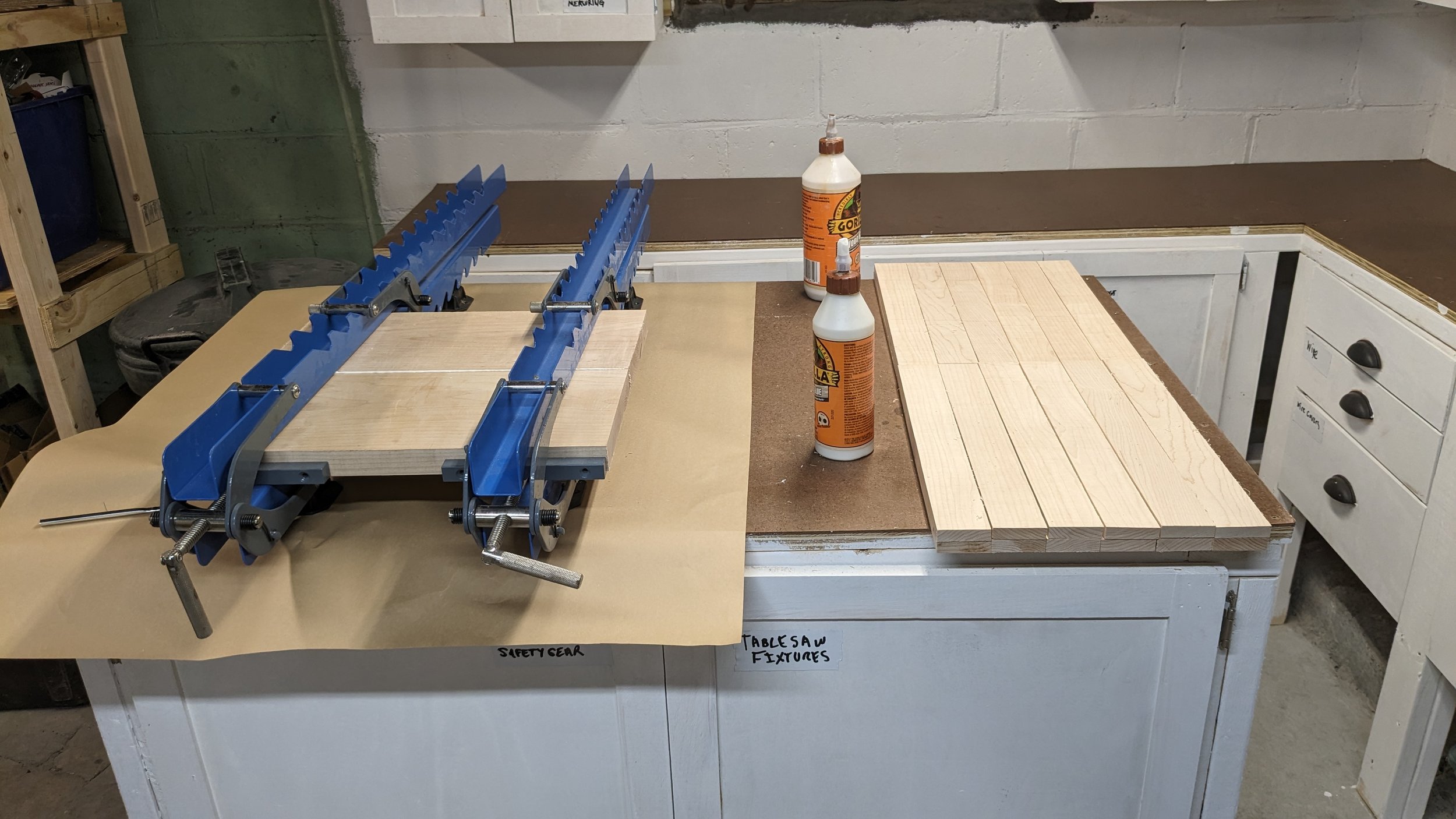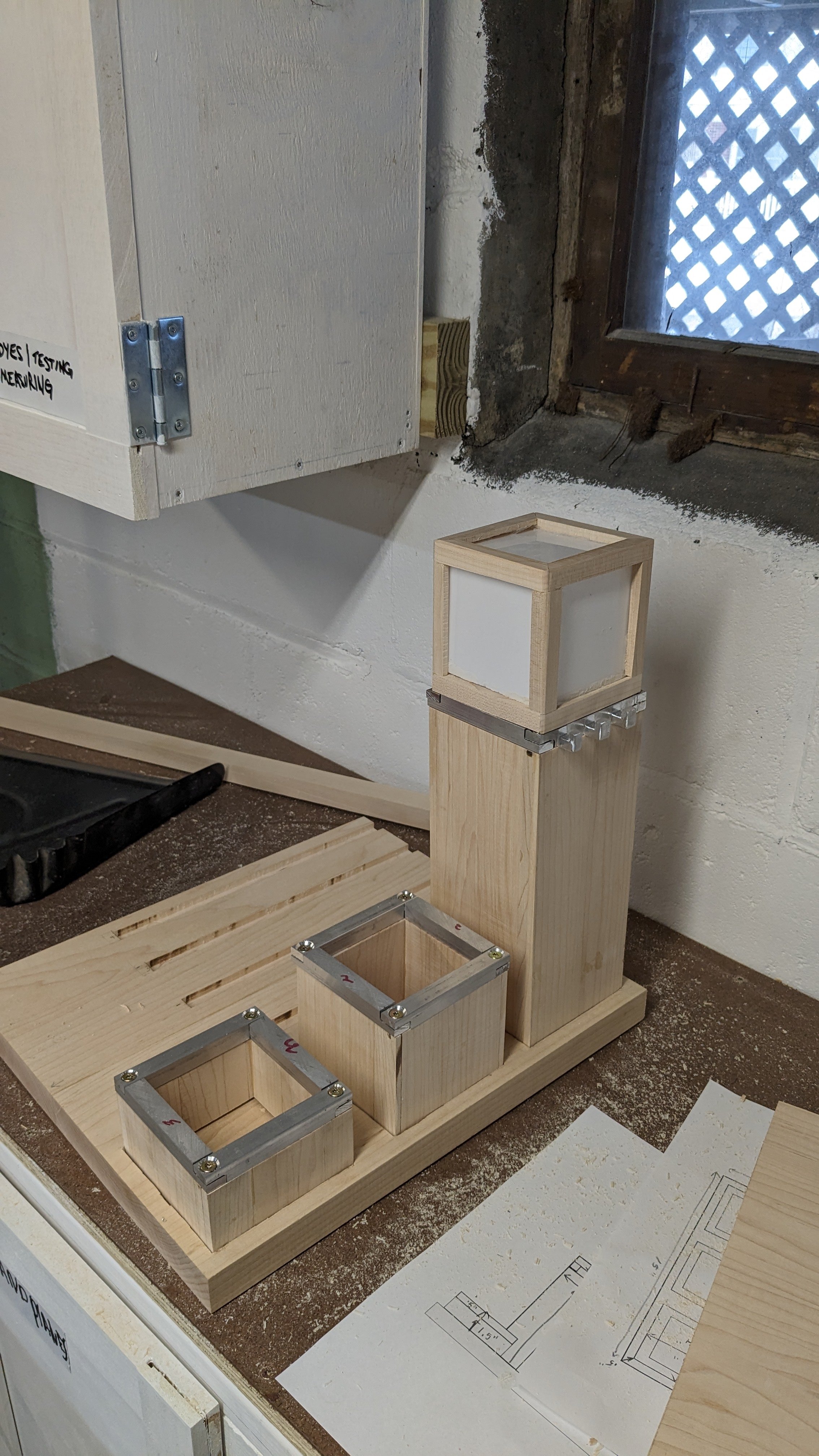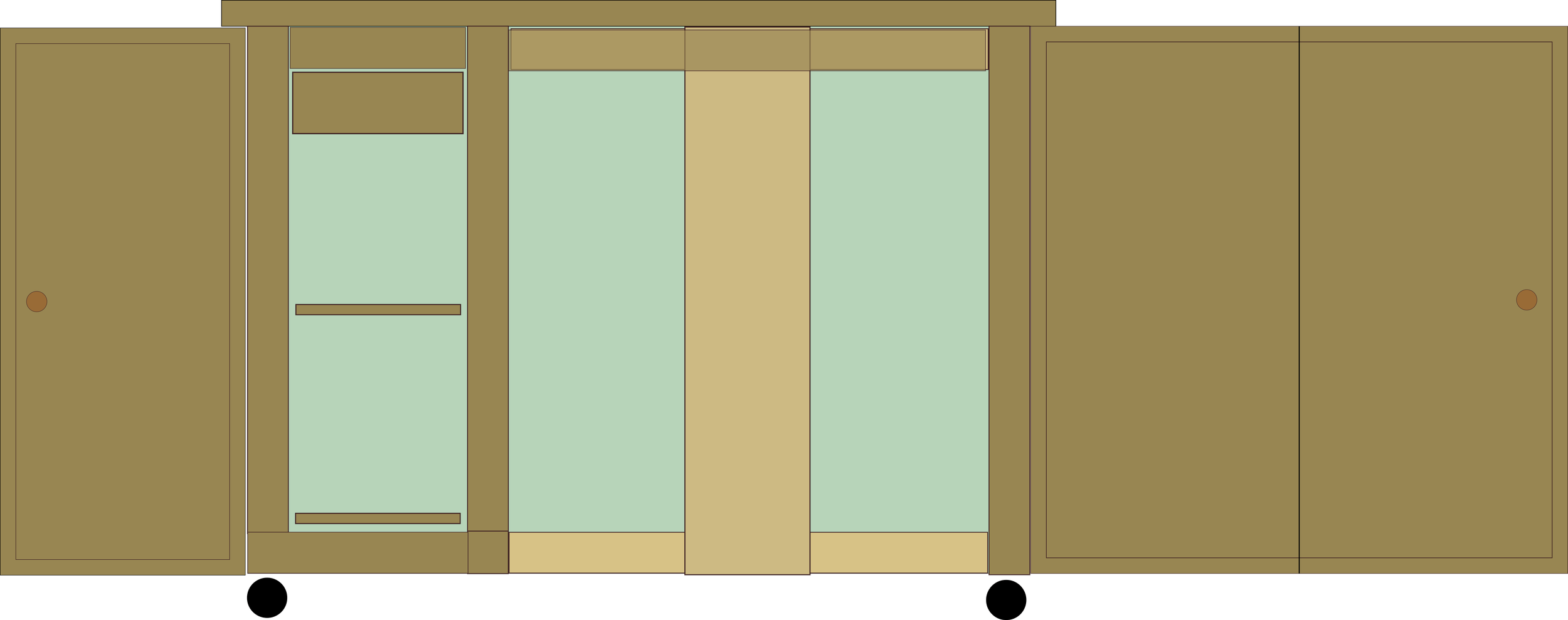When I replaced our bed last year, I ended up salvaging the old bed frame which was solid cherry. I cut up the usable parts and a friend from the woodworker’s guild I belong to helped me use his drum sander to remove the finish. I ended up with a respectable amount of usable material. What to make with it?
I’ve always liked wing-back chairs and I’ve always wanted a chair for our bedroom, so this turned out to be a good chance to make a wing-back chair for the bedroom. I didn’t want to make a fully upholstered wing-back chair like so many traditional ones are. I had an inspiration for a modern one that had minimal upholstery and a modern frame that would be exposed to show off the joinery.
I also wanted something with simplified lines that delivered the feel of a wing-back without the extra curves and embellishments of a traditional one. I drew up some sketches, see below:
I stole some critical dimensions from a set of dining room chairs that we own that are very comfortable. So the seat dimensions, leg lengths, back rake angle etc… I’d never built a chair like this before so I realized that I should probably prototype as many of the features as I could using some cheap material before I committed to the cherry.
The first thing I built a prototype of was the joint I intended to use between the legs and wings and the seat. I wanted a single joint that would lock into a mortise in the seat. The back rib of the chair would flow down into the back leg, the front arm support would flow down to the front leg and the wing would also use the same joint just without a leg below it. I planned to cut the mortises in the seat blank and the leg/wing blanks with a set of router templates.
See the prototype below:
It took two router templates per joint but the concept worked fine and was repeatable. Next I got some relatively straight, unblemished, pine boards from the local big box hardware store ( took some digging.) My plan was to build the whole chair at least to the point where I could explore all of the things I had questions about including an unconventional approach to the upholstery.
You can see the progression below:
Because of the relative angle of the back to the wings it wasn’t possible to put in panels to support the upholstery. So I opted to put in hidden framing that was compound mitered and fitted between the uprights at uniform intervals. I just screwed and glued the framing since every mortise and tenon would have been very difficult and time consuming for something that wasn’t going to be visible in the end result.
I would then cover the framing by stapling on burlap and then I would glue the covered cushions to the burlap using a contact adhesive made for doing upholstery.
See detail of the prototype below:
This approach worked great and I learned a couple of things in the process that would let me improve the final chair. In this cushion I glued the fabric to the front of the cushion as well as the back which caused any wrinkles to be glued in place. I realized that I only needed to glue the fabric that wrapped around the back so that the front could move and flatten as needed.
Having a full scale chair to test I also realized that I had made the joints larger than needed and they were impinging on the seat area. Also in general the seat was a little too small given the thickness of the cushions. So I reduced the size of the joints by 1/2” and I widened the seat by 2” and made it deeper by 1”. I was also able to measure the footprint of the chair in both floor space and air space and then make sure it would fit nicely where I intended to put it. I taped out the area on the floor to make sure.
This is where I made a process error. I remade the templates with the changes based on the prototype. I did not test them on another prototype joint. This was a mistake because in remaking them I had introduced an error which would affect the fit of the joints. I was far enough into making the final chair before I found out that I couldn’t really go back. Fortunately I was able to fabricate shims which when glued in filled the error completely and there was no structural compromise.
I also tested things like cutting tapers on the legs, rounding them over etc… The prototype was a good investment in time. I moved on to building the final chair using cherry.
I didn’t have enough material to make the seat blank out of solid cherry at the thickness that I wanted so I made the center out of 7/8” ash which was salvaged from the slats of the bed frame. I created a rabbit on the center section and a mirrored rabbit on the cherry border pieces so they would be nicely aligned. I used lap joints in the corners of the cherry border because I realized that I was going to be cutting into those joints to mount the legs and mortise and tenon joints would mostly disappear in that process.
See this sequence below:
I also rounded the front corners, cut scallops and tapers in the sides of the seat and rounded over the edges. The difference in the thickness of the center and the frame provides a nice recess for the seat cushion (which is mounted on a piece of 3/8” plywood) to drop into.
Because of the rake of the back support and the leg, I could not cut the back legs out of a single piece of material so I had to make an upper and lower section and glue them together with a lap joint to make the leg blank. Making accurate lap joints is more challenging than it seems and I had to fill them a bit to make up for some error. I used the band saw to cut them out of glued up material so that they would be 1 1/2” square. Because some of the salvaged wood was a little bigger than 3/4” thickness I had to cut those pieces to final thickness on the table saw. Fortunately this worked out OK with the blade set to full height.
After dry fitting everything, shimming all the joints, figuring out the stretchers and their mortises and tenons, trimming the legs to length, tapering the lower legs on the back and the inside, rounding over all the edges, and sanding everything to 320 grit… I was ready for assembly.
See sequence below:
I also fitted the arms and mortised them into the wing support and pinned them to the arm support with a 1/2” maple dowel.
Another process error I had was that I had to fill a bunch of the joints and I wasn’t neat enough in applying the filler. This made for a lot of remedial sanding in the end, I will be much more careful and use some masking and smaller spatulas for filling next time.
I used a combination of 60 grit sandpaper, micro-plane rasp, and Japanese saw-rasp to smooth and shape all of the joints so that they flowed with the legs, supports, and the seat. There was a lot of shaping to get nice transitions all around. I finished all the shaping with sanding up to 320 grit.
Now I had to put finish on the whole piece, two coats of General Finishes Hard Wax Oil which brought out the color and figure of the cherry very nicely.
After the finish was dry, I made paper templates of all of the sections that would be upholstered. I used the templates to cut the burlap to cover the inside and outside of the support framework. I stapled the burlap in place. The back would be covered with just fabric glued to batting, stapled on the inside and glued to the burlap.
The inside cushions are a layering of 1 1/2” Lux Foam and batting, the fabric is wrapped around the cushion and only glued on the back. The seat cushion is the same cushion glued to the 3/8” plywood blank and then the fabric is fitted and stapled on the back to the plywood. It just drops into the recess in the seat.
The other cushions are glued to the burlap and the support frame.
Here is that sequence:
And that is the final product. I learned a lot doing this project and I’ll improve many of my processes for the next one based on this. My upholstery is getting better. I’m very happy with the first chair that I designed myself. It delivers on all of my goals. It is also very comfortable to sit in…










































































